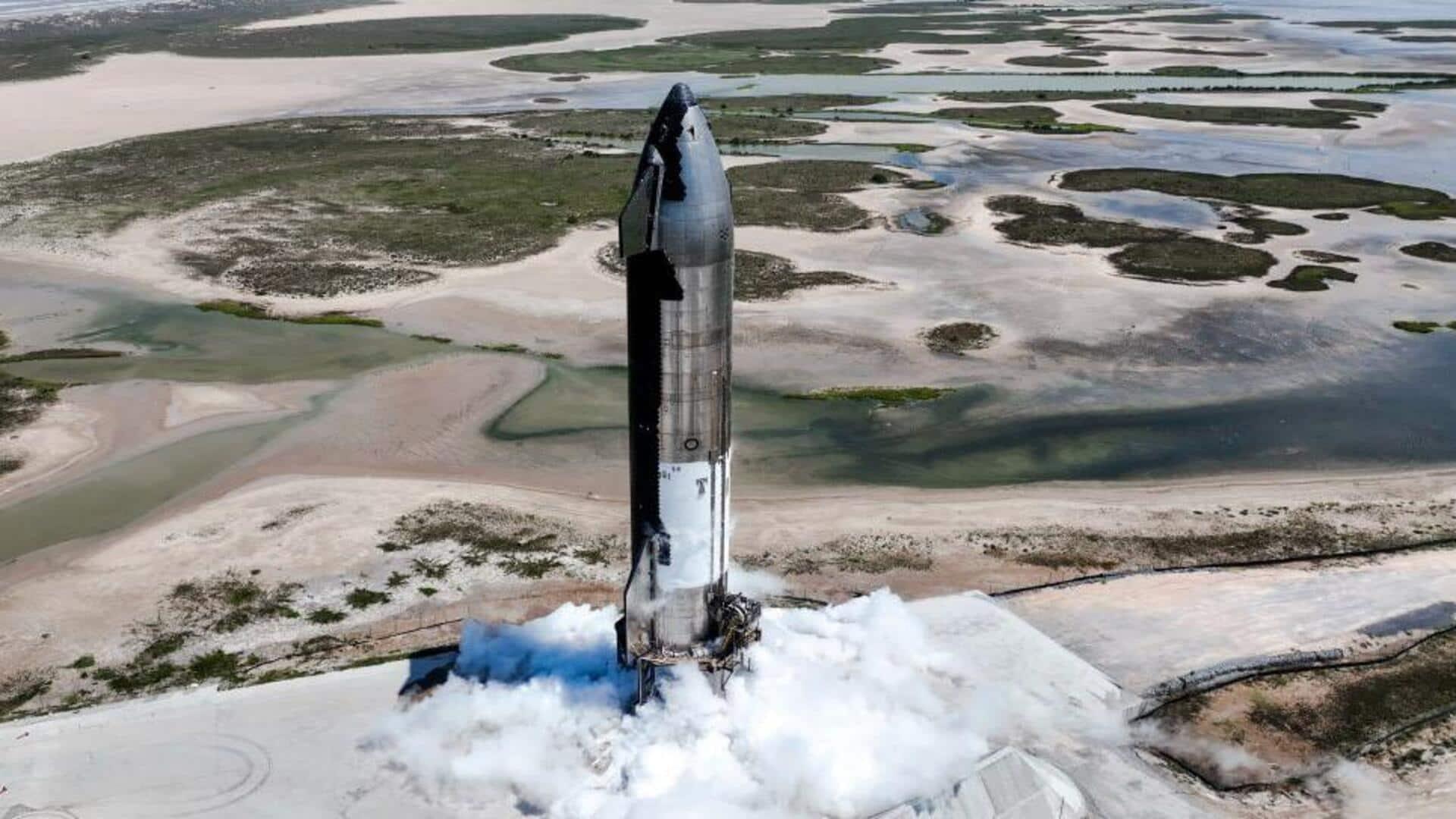
SpaceX's next Starship prototype undergoes engine test
What's the story
SpaceX is working on its next Starship prototype for spaceflight. The mega-rocket could launch in another six to eight weeks, according to a recent tweet by the company's CEO Elon Musk. The upper-stage prototype which will fly on the upcoming Starship test flight, called Ship 25, was recently subjected to an engine test. Let's see how that test went.
Context
Why does this story matter?
SpaceX's Starship is the world's most powerful rocket. It is expected to play a crucial role in advancing space exploration as it can ferry massive payloads and can help establish a base on the Moon, per the company. The mega-rocket already has been roped in for a few projects. It is planned to take NASA's Artemis 3 mission astronauts to the Moon in 2025.
Test
The test was carried out at SpaceX's Starbase facility
"Ship 25 completed a flight-like chill and spin of the Raptor engine pumps, stopping just before engine ignition," said SpaceX in a tweet. "As a result of the test, cryogenic liquid oxygen formed a visible cloud beneath the ship. This checked out vital systems in advance of the upcoming static fire." This engine test was carried out at SpaceX's Starbase facility, in South Texas.
Information
Ship 25 prototype will next undergo static fire tests
The Ship 25 prototype will next undergo static fire tests, according to the company. Static fires are common prelaunch tests when the engines are fired for a brief duration while the vehicle remains tethered to the ground.
Starship
Starship is the world's most powerful rocket
Starship, along with being the most powerful rocket, is also the tallest ever built. It comprises a first-stage booster called Super Heavy and a 165-foot-tall upper-stage spacecraft called Starship. Both booster and spacecraft are fueled by SpaceX's next-generation Raptor engine. Starship has six engines while Super Heavy has 33. Both components are fully reusable, meaning they will be flown back to Earth.
First test flight
Starship's first integrated test flight happened on April 20
A fully-stacked Starship went on its first-ever test flight on April 20. That test flight, which included the Ship 24 prototype, was aimed at sending the prototype halfway around Earth. However, that did not happen as the rocket's stage separation failed. SpaceX sent a self-destruct command a few minutes after launch and the rocket exploded over the Gulf of Mexico.
Second test flight
What is the second test flight about?
All eyes are now on Starship's second test flight, which will fly Ship 25 and a Super Heavy component called Booster 9. That flight will have similar objectives as the first one, Musk has said. The rocket's second test flight could occur in six to eight weeks provided SpaceX does not encounter regulatory issues and the prototype testing goes according to plan.